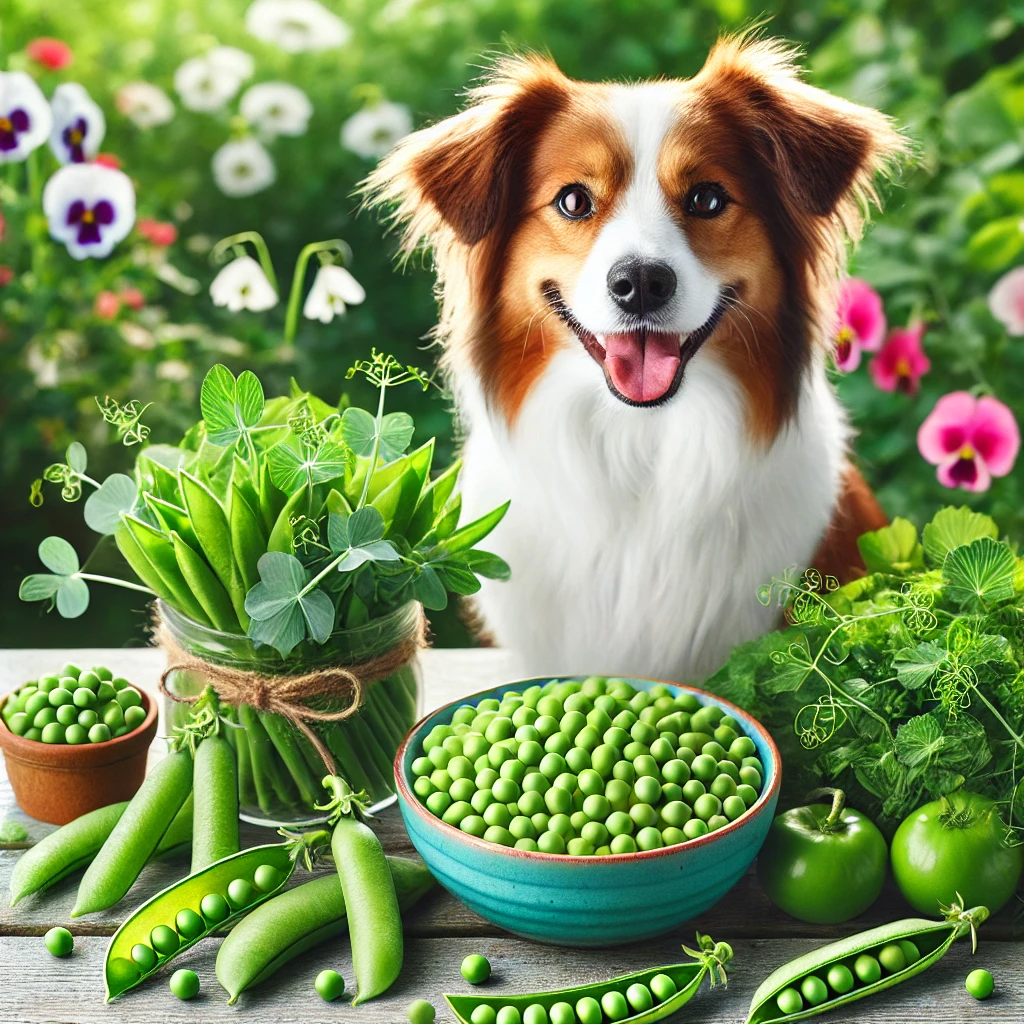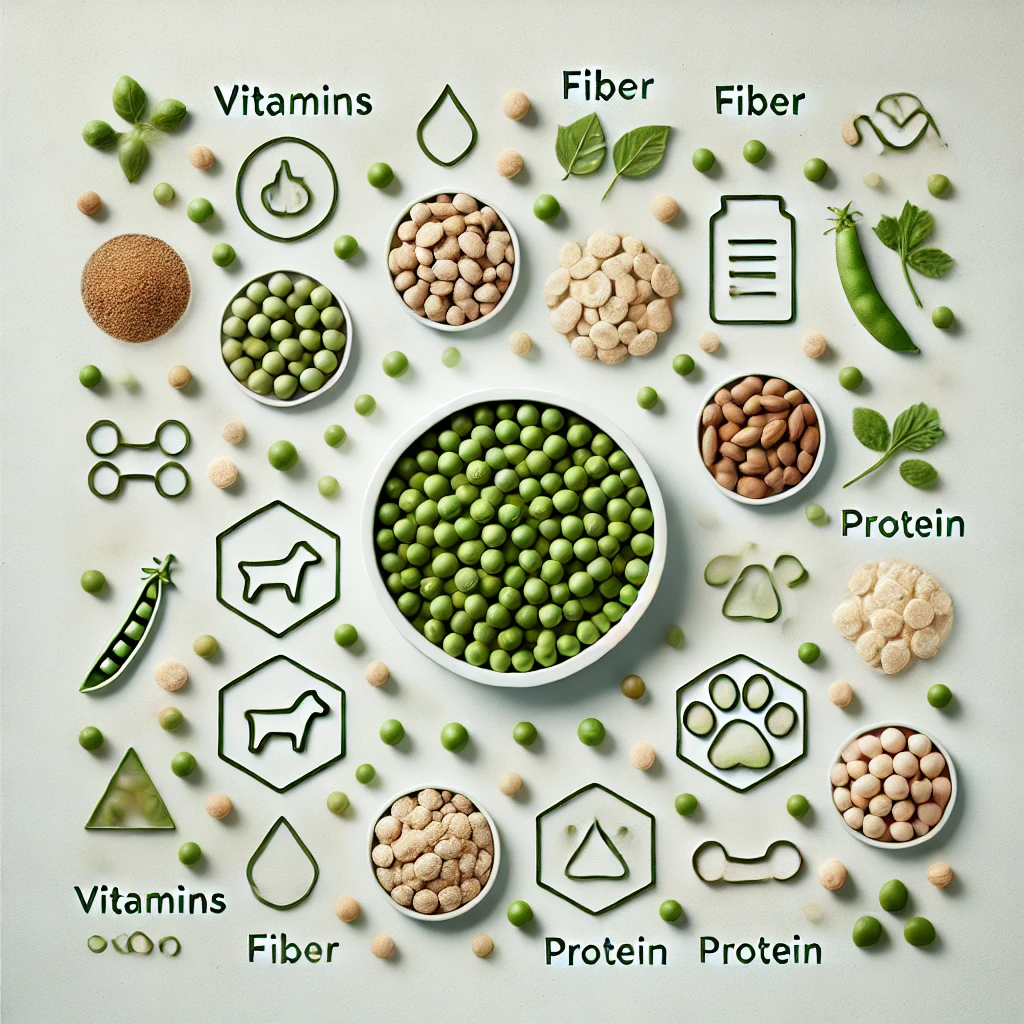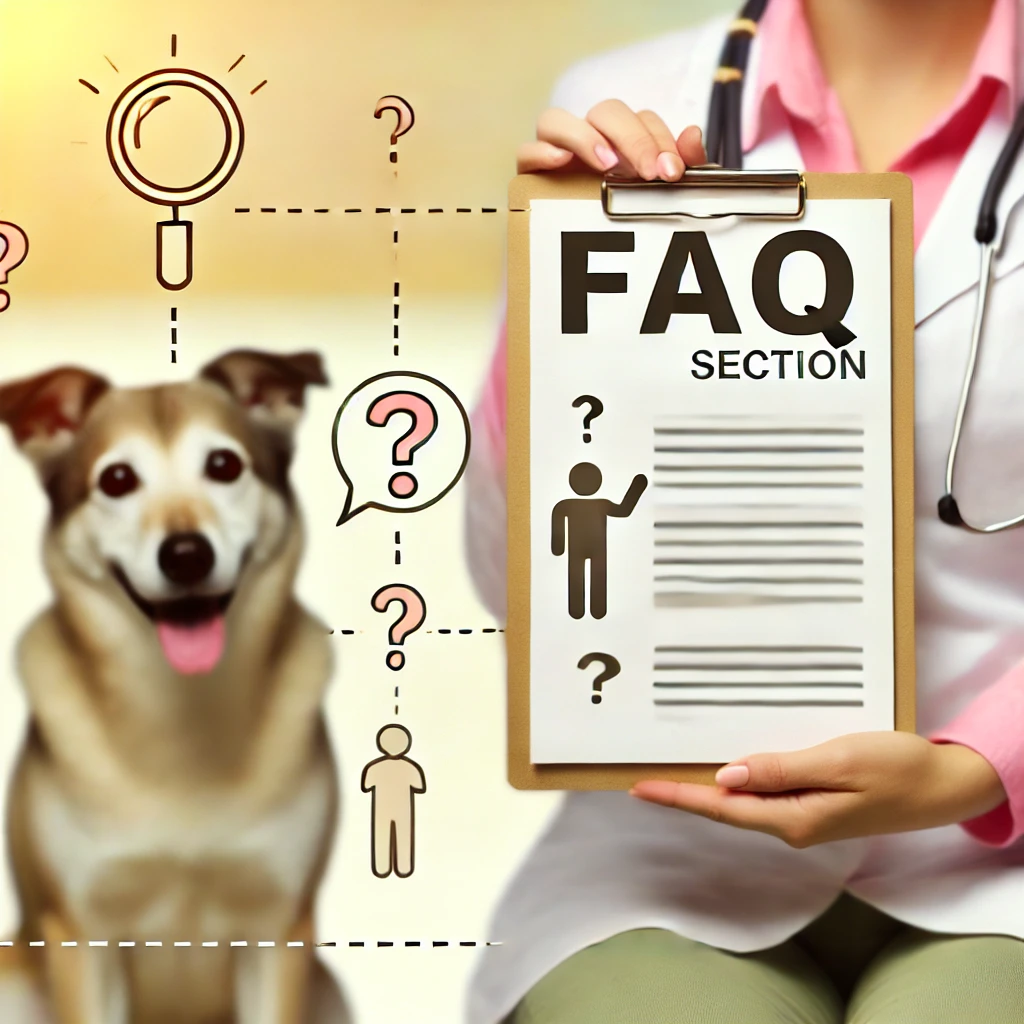
Can dogs eat peas?
As a pet parent, you’ve probably wondered about adding different vegetables to your dog’s diet.
Peas are a common ingredient in many dog foods, but are they actually beneficial or safe for your furry friend?
In this post, we’ll take a deep dive into whether peas are a good addition to your dog’s diet and explore the health benefits, risks, and how to properly serve peas to your dog.
From sugar snap peas to garden peas, dogs can enjoy a variety of pea types in moderation.
However, as with any new food, it’s important to understand how peas may impact your dog’s health and whether they are suitable for all dogs.
Introducing to Peas in a Dog’s Diet

Peas are often hailed as a healthy and nutritious snack for humans, but the question remains: can dogs eat peas?
The short answer is yes, dogs can eat peas, but there are a few things to consider before feeding them to your pet.
Peas, in their various forms—green peas, snow peas, snap peas—are low in calories and packed with essential vitamins, minerals, and antioxidants that are beneficial to both humans and dogs.
For pet owners who want to incorporate healthy and natural treats into their dog’s diet, peas can be a good option.
However, it’s important to remember that not all dogs may tolerate peas, and there are specific guidelines you should follow when introducing them.
Let’s explore in more detail why peas might be a good addition to your dog’s diet, the types of peas that are safe for dogs, and any potential risks associated with feeding peas to dogs.
Can Dogs Eat Peas? Understanding the Nutritional Value

One of the first questions dog owners ask is, “Can dogs eat peas, and what benefits do they offer?”
Peas are highly nutritious, offering a range of health benefits for dogs.
They are a good source of vitamins, minerals, and fiber, which are essential for your dog’s overall health and well-being.
Key Nutritional Benefits of Peas:
- Vitamins A, B, C, and K: Peas are rich in essential vitamins that support your dog’s immune system, bone health, and vision. Vitamin K, in particular, is important for blood clotting and bone strength.
- Fiber: Peas contain a high amount of dietary fiber, which aids in digestion and helps maintain a healthy weight.
- Protein: Peas are also a good source of plant-based protein. While they shouldn’t replace animal protein in your dog’s diet, they can supplement protein intake in certain dog foods.
- Antioxidants: Peas contain antioxidants like lutein, which is beneficial for maintaining healthy skin, heart, and eye function in dogs.
- Low Calorie Content: For dogs that need to maintain or lose weight, peas provide a low-calorie snack option that offers a satisfying crunch without adding extra pounds.
Peas can contribute to your dog’s balanced diet, but it’s essential to feed them in moderation and avoid using peas as a primary food source.
Types of Peas Safe for Dogs to Eat

When it comes to answering the question “Can dogs eat peas?” it’s important to clarify which types of peas are safe for dogs to consume.
Not all peas are created equal, and some types are more suitable for your furry friend than others.
Understanding the different varieties and how to serve them properly can ensure your dog enjoys all the benefits peas have to offer without any risks.
Let’s explore the main types of peas that are safe for dogs and how they should be prepared.
1. Green Peas (Garden Peas)
Green peas, also known as garden peas or English peas, are the most common type of pea found in dog foods and treats.
These small, round peas are packed with nutrients and can be a healthy addition to your dog’s diet.
Garden peas are high in vitamins A, B, C, and K, as well as minerals like iron and potassium.
They’re also rich in fiber, which helps support digestion, and they contain antioxidants that can help maintain your dog’s overall health.
- How to Serve Green Peas:
You can serve green peas to your dog either fresh, cooked, or frozen. Fresh peas can be a tasty, crunchy treat, while cooked peas are softer and easier to digest, especially for older dogs or dogs with dental issues. If serving cooked peas, ensure they are plain, with no added salt, butter, or seasoning. Frozen peas can also be given to your dog straight from the freezer as a refreshing snack, particularly during hot weather. - Portion Size:
A small handful of green peas is generally enough for most dogs. If you’re adding them to your dog’s regular meals, a tablespoon or two mixed into their food will provide a nice nutritional boost without overwhelming their diet.
2. Sugar Snap Peas
Sugar snap peas, also known as snap peas, are another safe and nutritious option for dogs.
Snap peas are known for their sweet flavor and crunchy texture, which many dogs enjoy.
The entire pod is edible, but you should be cautious if your dog has difficulty chewing, as the pods can be tough for some dogs to break down.
Snap peas are rich in fiber, which aids digestion, and they contain plenty of vitamins and minerals that support your dog’s immune system, bone health, and skin health.
Additionally, the natural sugars in snap peas provide a sweet taste without the harmful effects of processed sugar.
- How to Serve Snap Peas:
You can serve sugar snap peas raw, steamed, or lightly cooked. Raw snap peas have a satisfying crunch that many dogs love, while steamed or lightly cooked snap peas are easier to chew and digest. Be sure to wash the peas thoroughly before serving to remove any pesticides or chemicals. Avoid seasoning or adding oils, as these can upset your dog’s stomach. - Portion Size:
Offer a few snap peas at a time as a crunchy treat or mix them into your dog’s meals for added texture and flavor. As with any treat, moderation is key to preventing digestive upset.
3. Snow Peas
Snow peas, which are similar to sugar snap peas, have flat, tender pods that make them easy for dogs to chew and digest.
Snow peas are low in calories and high in nutrients, making them a great choice for dogs that need a low-calorie snack.
Like other types of peas, snow peas are full of vitamins and minerals that can support your dog’s overall health, and they provide a nice balance of fiber and protein.
- How to Serve Snow Peas:
Snow peas can be served raw, lightly steamed, or cooked. If you choose to steam or cook them, make sure to keep the preparation simple—no added salt, spices, or oils. Raw snow peas can also be a great addition to your dog’s diet, offering a fresh, crunchy texture. Just be sure to chop them into smaller pieces if your dog tends to gulp their food. - Portion Size:
A few snow peas per day can be given as an occasional snack or mixed into your dog’s meals. Always monitor your dog after introducing a new food to ensure they don’t have any adverse reactions.
4. Frozen Peas
Frozen peas are a convenient and readily available option that can be a great snack for dogs.
Whether you have a bag of frozen green peas, snap peas, or snow peas, they can all be served to your dog straight from the freezer.
Frozen peas retain most of their nutrients and can provide a cooling, crunchy treat, especially during warmer months.
One of the benefits of frozen peas is that they are often fresher than canned peas, as they are typically frozen shortly after being harvested.
This ensures that your dog gets the full nutritional value of the peas without the added preservatives found in canned peas.
- How to Serve Frozen Peas:
Frozen peas can be served directly to your dog without any need for thawing or cooking. Simply take a handful from the freezer and offer them as a cool snack. You can also mix frozen peas into your dog’s regular meals to add a bit of variety and texture. If your dog has sensitive teeth or prefers softer foods, you can let the peas thaw for a few minutes before serving. - Portion Size:
A small handful of frozen peas is usually sufficient as a treat or meal supplement. Avoid overfeeding frozen peas, as the high fiber content can cause digestive upset if consumed in large amounts.
5. Canned Peas (Use with Caution)
While fresh and frozen peas are ideal, some pet owners may wonder, “Can dogs eat peas from a can?”
Canned peas are not the best option for dogs because they often contain added sodium, which can be harmful to your pet.
Too much salt in a dog’s diet can lead to dehydration, increased blood pressure, and in severe cases, sodium poisoning.
If you don’t have access to fresh or frozen peas and must use canned peas, look for low-sodium or no-salt-added varieties.
Even then, it’s important to rinse the peas thoroughly under water to remove any excess sodium before serving them to your dog.
- How to Serve Canned Peas:
If using canned peas, drain and rinse them well before serving. This helps to remove most of the sodium. After rinsing, you can serve them as a snack or mix them into your dog’s food. However, it’s always best to choose fresh or frozen peas whenever possible, as they are much healthier. - Portion Size:
Stick to small amounts of canned peas if they are your only option. One or two tablespoons mixed into your dog’s food can provide the nutritional benefits without overloading your dog’s system with sodium.
What to Avoid
While peas are generally safe, there are a few things to keep in mind when feeding peas to your dog:
- Avoid Seasoned Peas: Any peas that are cooked with butter, salt, or spices should be avoided. Dogs don’t need the extra seasoning, and it can be harmful to their health.
- Be Careful with Pea Pods: If your dog has trouble chewing or tends to gulp their food, pea pods can pose a choking hazard. Make sure to chop them into small, manageable pieces if serving pods, especially with snow or snap peas.
Understanding the different types of peas safe for dogs and how to prepare them ensures that your dog can enjoy this nutritious vegetable without any issues.
Whether you’re serving fresh, frozen, or even raw peas, they can be a delightful and healthy addition to your dog’s diet when given in moderation.
Can Dogs Eat Peas? The Potential Risks

While peas offer several health benefits, it’s also important to be aware of potential risks.
So, can dogs eat peas without any concerns?
For the most part, yes, but there are some factors to consider before incorporating peas into your dog’s regular diet.
1. Gastrointestinal Issues:
Peas contain a type of sugar called raffinose, which can cause gas and bloating in some dogs.
If your dog is prone to digestive issues, it’s best to introduce peas slowly and monitor their response.
If your dog experiences gas, diarrhea, or vomiting, you may want to reduce or eliminate peas from their diet.
2. Purines and Kidney Health:
Peas contain compounds called purines, which are broken down into uric acid in the body.
While purines are safe for most dogs, dogs with kidney problems or a predisposition to kidney stones should avoid peas.
High levels of uric acid can lead to the formation of kidney stones or exacerbate pre-existing kidney conditions.
3. Choking Hazard:
For smaller dogs or dogs that tend to gulp their food, peas can pose a choking hazard, especially if they are served whole.
Always ensure peas are appropriately sized for your dog to chew comfortably.
4. Allergies or Food Sensitivities:
Though rare, some dogs may be allergic to peas or have food sensitivities.
If you notice signs of an allergic reaction, such as itching, swelling, or difficulty breathing, discontinue feeding peas immediately and consult your vet.
How to Serve Peas to Your Dog

Now that we’ve answered the question “Can dogs eat peas?” it’s time to discuss how to safely serve peas to your dog.
Here are a few tips to keep in mind when adding peas to your dog’s diet:
1. Keep It Plain:
Always serve peas plain, without added salt, butter, or seasoning. Human food additives like salt or garlic can be harmful to dogs.
2. Portion Control:
Peas should be served in moderation. While they are nutritious, peas should only be a supplement to your dog’s balanced diet. A handful of peas once in a while is enough for most dogs.
3. Cooked vs. Raw:
Both cooked and raw peas are safe for dogs. Cooking peas can make them easier to digest, but raw peas can be a refreshing treat, especially for dogs that enjoy a crunchy texture.
4. Peas in Dog Food:
Many commercial dog foods already include peas as an ingredient. If your dog is already consuming dog food with peas, be mindful of how much more you’re adding to avoid overfeeding.
Can Dogs Eat Peas as a Regular Part of Their Diet?

While peas can be a great occasional treat, can dogs eat peas regularly as part of their diet?
The answer depends on your dog’s individual health needs and diet.
Peas can be a healthy addition for most dogs, but they should not replace more essential elements of your dog’s diet, such as meat-based proteins.
If your dog has any existing health conditions, particularly kidney issues, it’s important to consult your vet before making peas a regular part of their diet.
In most cases, small amounts of peas mixed into their meals or offered as treats are perfectly fine.
Conclusion: Can Dogs Eat Peas?
So, can dogs eat peas?
Yes, peas are generally safe and nutritious for dogs when served in moderation.
They provide a variety of vitamins, minerals, and fiber that can support your dog’s health.
However, it’s important to consider potential risks, such as digestive issues or allergies, and to avoid overfeeding peas, especially for dogs with kidney problems.
When adding peas to your dog’s diet, keep them plain and serve them as an occasional supplement rather than a primary food source.
If you have any concerns about how peas may affect your dog’s health, always consult your veterinarian before making dietary changes.
Incorporating healthy vegetables like peas into your dog’s meals can be a great way to enhance their nutrition, but as with any food, moderation and balance are key to ensuring your furry friend stays healthy and happy.
FAQs: Can Dogs Eat Peas?

Here are some frequently asked questions to help clarify any concerns you might have about feeding peas to your dog.
1. Can dogs eat peas every day?
While peas are healthy for dogs and can be given as a treat or mixed into meals, they should not be eaten every day in large quantities.
Peas should be offered in moderation as part of a balanced diet.
Too many peas could upset your dog’s stomach or contribute to digestive issues due to their high fiber content.
2. Are peas safe for puppies?
Yes, peas are generally safe for puppies when served in small, manageable amounts.
Always introduce new foods slowly to see how your puppy reacts.
Make sure the peas are plain, without added salt, butter, or seasoning, and serve them in small portions to avoid any choking hazards.
3. Can peas cause allergies in dogs?
Although rare, some dogs can be allergic to peas.
If your dog shows signs of an allergic reaction, such as itching, swelling, vomiting, or difficulty breathing, discontinue feeding peas and contact your veterinarian immediately.
It’s important to monitor your dog for any unusual symptoms when introducing new foods.
4. Can dogs eat peas in their pods?
Yes, dogs can eat peas in their pods, especially with snow peas and sugar snap peas.
However, some dogs may have difficulty chewing the pods, so it’s a good idea to chop them into smaller pieces or lightly cook them to make them easier to digest.
Always ensure the pods are clean and free of pesticides.
5. Can dogs eat canned peas?
Canned peas are not ideal for dogs due to their high sodium content.
If you must use canned peas, opt for low-sodium or no-salt-added varieties and rinse them thoroughly before serving.
Fresh or frozen peas are a much healthier option for your dog.
6. Are frozen peas safe for dogs?
Yes, frozen peas are safe and can be a refreshing snack for dogs.
You can serve them straight from the freezer as a crunchy, cool treat, especially in warm weather.
Just be sure that the peas are plain and do not contain any added seasonings.
7. What should I do if my dog eats too many peas?
If your dog eats too many peas, they may experience digestive issues such as gas, bloating, or diarrhea due to the high fiber content.
In most cases, these symptoms will resolve on their own.
However, if your dog shows signs of distress, vomiting, or prolonged discomfort, it’s best to contact your vet for advice.
8. Can peas help with dog weight loss?
Yes, peas are a low-calorie, high-fiber vegetable that can be helpful in maintaining a healthy weight for your dog.
They can be used as a treat or mixed into meals to add volume and nutrients without adding excess calories.
However, they should not replace the primary ingredients in your dog’s diet, such as protein and fats.
9. Are peas included in commercial dog foods safe?
Many commercial dog foods include peas as a source of protein, fiber, and vitamins.
In most cases, these peas are safe for dogs, as they are incorporated in appropriate amounts.
However, it’s always a good idea to read the ingredient list and consult with your veterinarian if you have any concerns about your dog’s food.
10. Should dogs with kidney problems eat peas?
Dogs with kidney problems or a history of kidney stones should avoid peas, as they contain purines.
Purines can contribute to higher levels of uric acid in the body, which may lead to the formation of kidney stones or worsen existing kidney conditions.
Always consult your veterinarian before feeding peas to a dog with kidney issues.
This FAQ section should provide clarity and confidence when deciding if and how to incorporate peas into your dog’s diet.
If you’re ever in doubt, it’s always best to consult with your veterinarian.



